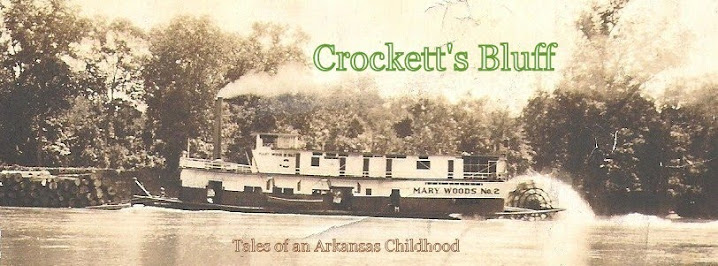Whether it was, as has often been asserted, an ancient Chinese parable that first suggested "a picture is worth a thousand words" or it was one or another of dozens of other writers of note over the ages that coined the phrase, it matters little. That the observation is so obviously true is all that matters. Furthermore, the obvious extension of this statement is, as well: that "every picture tells a story" -- or perhaps stories.
The stories inherent in the following images of members of the Bullock and Rush families are, to some degree, incomplete. In addition to being fellow farm families and long-time members of the Crockett's Bluff community for most of the twentieth century, there is much we no longer know about their lives and time - that is, those of us putting together this website. It is our hope the obvious stories that lurk behind these images will emerge from the knowledge and stories of others who might in the future see them. [Note: a double click on a picture will enlarge it.]

What we know about this first picture is it is a harvest (rice?) scene somewhere in the Bluff area about 1913, and we know the young man astride the lead horse pulling this now antique binder is Cread Rush and the seemingly slightly older young man on the binder is his father Ed. (The dark cloud in the background and the torn white area in the foreground add a certain drama to the scene for me.) Are the adults in the foreground elders in the Rush family?

Pictured at the left is Howard Bullock and his perhaps soon bride-to-be wife Jenny V (later Geneva) Purdy who would eventually be the parents of Kathleen, Clyde, Boone, Elnora, and Sharon (who would eventually marry Harold Rush, son of Cread pictured above).
Yes, that is a pistol in Howard's belt! Clearly this image does not reveal any sign of the fact that, according to his daughter Sharon, one of his greatest loves was dancing.
The picture below, with another Bullock family harvest scene in the background, records the apparent presentation of Roger McCallie to his grandfather by his grandmother and her daughter Elnora. First grandchild? First grandson?
Just one more of those threshing scenes of which I'd love more pictures for this site, since the harvest season -- apart, of course, from early spring -- was the nearest to a truly happy season in the Grand Prairie region of Arkansas in my memory.
From L: Elenora Bullock, with her parents Geneva and Howard and infant grandchild Roger? McCallie
Music has forever been a significant part of any culture, even one as relatively isolated as the Crockett's Bluff of my youth. In addition to the music of church services of the Baptist and Lutheran churches, and the traditional hits that drifted constantly from early radio, so new to Americans in the early nineteen thirties, there was other music. After all, electricity was required for the radio, and I can remember the oil lamps at night before the day when the first light bulb, hanging from a twisted cord in the kitchen, was introduced to the Woodiel household.
There was, however, other much more secular and more fundamentally American music of the folk and Grand Ole Opry sort featured at rural and small town dance "halls" over Arkansas during my youth. Despite the disapproval of the local Baptist churches, they survived.
The image below is of Clyde Bullock playing the guitar along with an unidentified fiddler about which we'd like to know more.
 The final image is of Geneva Bullock feeding her chickens on one of those rare days in winter when it snowed. Also in the picture is Charlie, pictured pulling Boone Bullock's cart in Hal Prange's memoir published earlier.
The final image is of Geneva Bullock feeding her chickens on one of those rare days in winter when it snowed. Also in the picture is Charlie, pictured pulling Boone Bullock's cart in Hal Prange's memoir published earlier.
I love this image for several reasons, apart from the fat healthy chickens pictured. It's unusual. It has snowed enough the leave measurable amounts, and Geneva (Mrs. Bullock to me) looks happy, as does Charlie.
I love her outfit: rubber boots and apron, scarf, and warm jacket -- all that was required for such a wife and mother in her position on a rare day in Crockett's Bluff in the late 1930s or early forties. And that appears to be a jeep in the background. Another jeep?
No doubt, there's much more to say about these pictures and the stories that lie behind them,or the stories they will bring to the mind of viewers. When those stories become known, we'll add them. After all, no story ends until the last teller has had his or her say!
I'm indebted to Sharon Bullock Rush for these pictures, some of many she shared with me during a March visit, as well as for much of the information re these pictures. [photo by Ken Shireman]
























